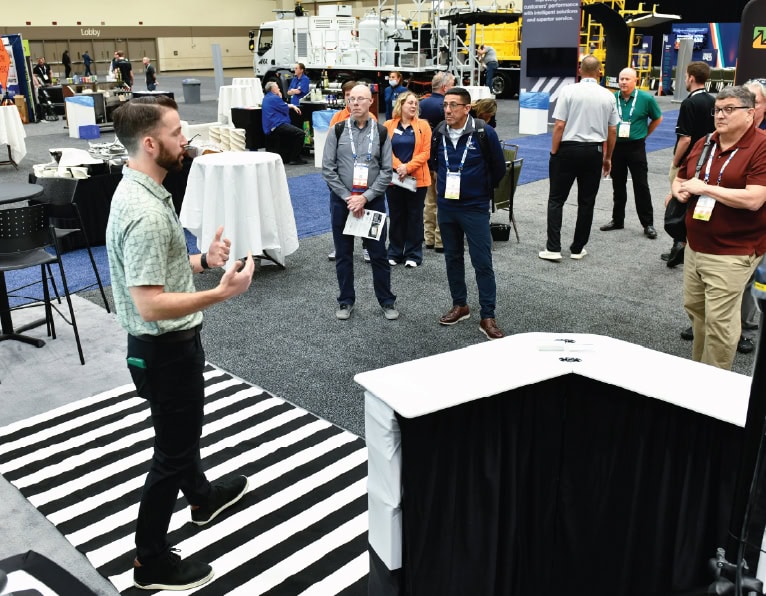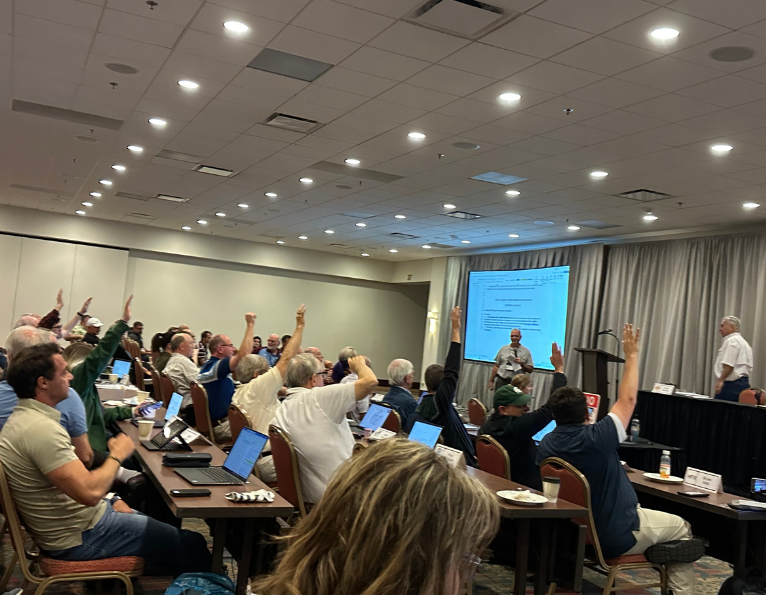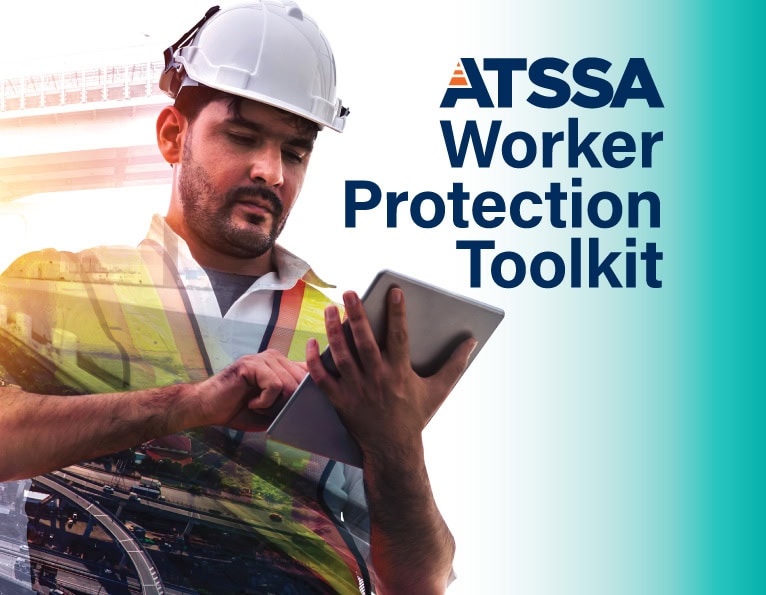By Whitney Remmes, RoadSafe Traffic Systems
Motor vehicle crashes at work zones are something we deal with every day.
In the roadway safety infrastructure industry, we are plagued by the hazards posed by distracted, fatigued, aggressive and impaired motorists traveling through our work zones. Not only are these motorists hazardous to our crews with boots on the ground, but they also pose a danger to other motorists.
While we work to protect our employees, co-workers and the motoring public, we must also keep in mind that motor vehicle accidents in work zones are expensive and that carrying the proper insurance can be the difference between the longevity of a business and the shuttering of its doors.
In the event of a motor vehicle accident in or approaching a work zone, often the injured party will file a lawsuit against the general contractor and other traffic safety services subcontractors.
Construction contracts typically require subcontractors to defend, indemnify and insure the general contractor, project owner and others the “Upstream Entities”. Thus, the construction contract is used to transfer one party’s liability for negligence to another party.
The indemnification language in construction contracts usually is much broader than the coverage in an insurance policy because the indemnification language in the construction contract makes the general contractor or subcontractor responsible for all the risks, even those that are uninsurable.
The scope of liability and the circumstances under which a subcontractor is liable should be the subject of negotiation to protect the subcontractor. Keep in mind that most states limit the ability to transfer liability for one’s own negligence in construction contracts. Subcontractors should make sure that their construction contracts comply with applicable state law.
Not only should you as the subcontractor negotiate to limit your potential scope of liability in the construction contract, but also you should make sure the insurance requirements in the construction contract are consistent with your own insurance coverage.
The key provision to analyze is known as the Additional Insured endorsement, which is intended to cover Upstream Entities such as the general contractor. Many types of Additional Insured endorsements are available in the insurance market, some more common than others.
Over time, the form of Additional Insured endorsements has changed. Initially, the language in the endorsements was fairly broad and included coverage for the negligence of the Upstream Entities. Fortunately, over the years the language has become narrower and not only eliminates coverage for the Upstream Entities’ negligence, but also, as discussed above, is more specifically governed by the contract between the parties.
Additional Insured endorsement forms for ongoing operations are CG 20 10, CG 20 33 and CG 2038. Additional Insured endorsement forms for completed operations are CG 20 37, CG 20 39, and CG 2040. Keep in mind that a project is considered a “completed operation” when any of the following is true: 1 all of the work required in the contract has been completed; or 2 all of the work to be done at a specific jobsite has been completed This applies if there is more than one jobsite.; or 3 the part of the work completed at a jobsite has been put to its intended use by anyone other than the general contractor or subcontractor.
The following chart discusses several of the Additional Insured endorsements often found within insurance policies.
Form Number/Language/ Notes
CG 20 10 11/85 – WHO IS AN INSURED is amended to include [the Additional Insured] but only with respect to liability arising out of ‘your work’ for that insured by or for you. – This endorsement provides the broadest coverage commonly available which also includes the additional insured’s own negligence.
CG 20 10 10/01 – [same as above] but limited to “ongoing operations” – Basically, the 10/01 limited coverage to liability arising out of the named insured’s ongoing operations. In order to extend coverage to the AI for completed operations, another endorsement needed to be paired with it. (2037 10/01)
CG 20 10 & CG 20 37 07/04 – These forms provide coverage to the additional insured “only with respect to liability…caused in whole or in part by 1 the named insured’s acts or omissions or 2 the acts or omissions of those acting on the named insured’s behalf.” – The language here was modified in a way so as to eliminate coverage for the additional insured’s own negligence.
CG 20 10 & CG 20 37 04/13 – 1. The insurance afforded to such additional insured only applies to the extent permitted by law; and 2. If coverage provided to the additional insured is required by a contract or agreement, the insurance afforded to such additional insured will not be broader than that which you are required by the contract for agreement to provide for such additional insured. – This edition further narrowed coverage by eliminating insurance coverage for indemnity obligations that are invalidated by law. Many states have anti-indemnity statutes that invalidate or void broad indemnity provisions which require subcontractors to indemnify upstream entities for their own negligence. These endorsements attempt to eliminate coverage for the additional insured to the same extent prohibited by the applicable anti-indemnification statute. Also, under these endorsements, the amount of coverage available to the additional insured will not be greater than that which is required by the contract with the upstream entity.
CG 20 10 & CG 20 37 12/19 – “The most we will pay on behalf of the additional insured is the amount of insurance: (1) required by the contractor; or (2) Available under the applicable limits of insurance.” The 12/19 endorsements are the most recent forms available. CG 20 38 These forms provide coverage to the additional insured “only with respect to liability… caused in whole or in part by 1 the named insured’s acts or omissions or 2 the acts or omissions of those acting on the named insured’s behalf.” – Additional insured status is provided to any owner, lessee, or contractor to which the named insured contractually agrees to provide such status without requiring a contractual relationship. As long as the named insured contractor is required per a written contract to provide additional insured status of an Upstream Entity, coverage attaches.
As a subcontractor, you should be cautious before signing subcontracts without first reviewing the insurance requirements in the subcontract, as well as the coverage provided in your insurance policy. Subcontractors should also seek input from their insurance brokers and legal counsel in-house counsel or outside coverage counsel. Often, general contractors and other Upstream Entities include requirements in the subcontracts for subcontractors to provide the older endorsements, i. e., the 11/85 or 10/01 forms discussed above, in an effort to secure the broadest possible additional insured coverage. By unintentionally agreeing to provide these endorsements in a contract you may be obligating yourself to provide the contractor and other Upstream Entities with broader insurance coverage than what is available under your policies.
In closing, remember that contractual risk transfer and related insurance issues are one of the most complex subjects in the construction industry. Understanding the implications of the Additional Insured endorsements to your general liability policy is a vital part of protecting your organization from significant losses, premium increases and legal defense costs.
This is the third in a series of blogs regarding legal liability issues. The first blog by Michael Capell of Brown and Brown announced ATSSA’s new legal liability group and introduced the issue of limiting risks in contract negotiations. The second blog by Mary Beth Applegate of Guidemark Inc. urged members to “Become familiar with ‘scope of work’ and indemnity in contract agreements.”
ATSSA held a Nov. 8 webinar on “Leveling the Playing Field for Contractual Liability.” If you missed the webinar, a recording can be accessed on the ATSSA Webinars page.
A legal liability session, “Contract Review 101,” was held during ATSSA’s 2023 Convention & Traffic Expo in Phoenix.
Whitney Remmes is assistant general counsel for RoadSafe Traffic Systems Inc. in Chicago.
NOTE: Information provided here is not legal advice. Rather, all information, content and references are for general informational purposes only.
Published Date
April 26, 2023
Post Type
- News
Topic
- ATSSA News
Group Type
- Council
Related News Articles
July 1, 2025
ATSSA’s 2025 New Products Rollout Report details the latest ideas for protecting workers, motorists and pedestrians
ATSSA’s 2025 New Products Rollout Report details the latest ideas for protecting workers, motorists and pedestrians NPRO entries offer cutting-edge…
June 25, 2025
NCUTCD Midyear Meeting provides update on MUTCD adoption
NCUTCD Midyear Meeting provides update on MUTCD adoption DES MOINES, Iowa – Eight states have completed the process of adopting…
June 18, 2025
ATSSA Worker Protection Toolkit equips leaders for preventing, responding to tragedy
ATSSA Worker Protection Toolkit equips leaders for preventing, responding to tragedy ATSSA’s Worker Protection Toolkit draws on the research and…


